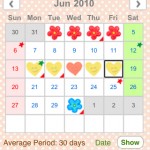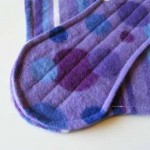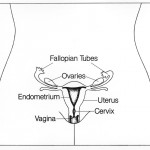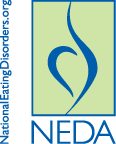How Do I Track My Period
 As most women know, the first question asked at each gynecology visit is ‘What was the first day of your last period?’ Doctors ask this question to determine how regular a woman’s menstrual cycle is and if the woman is pregnant, the date helps determine the approximate day of conception. Learning how to track your period is therefore a handy skill to have.
As most women know, the first question asked at each gynecology visit is ‘What was the first day of your last period?’ Doctors ask this question to determine how regular a woman’s menstrual cycle is and if the woman is pregnant, the date helps determine the approximate day of conception. Learning how to track your period is therefore a handy skill to have.
For girls just starting their period, knowing when their next period will start will help them plan for when supplies should be handy while away from home. Tracking can also help determine if periods are becoming too irregular.
Fortunately there are many calendars and even phone apps to help women and girls track their period. Some of the iPhone apps are reviewed here. If you don’t have a smart phone sites like Kotex and MyMonthlyCycles.com offer free online calendars. And then there is the old-fashioned printed calendar to carry around in a purse or backpack.
Using one of these calendars will allow you to track not only when you first start to bleed each menstrual cycle but also when other discharge or PMS symptoms occur. This will allow you to plan for any supplies you might need or action you might want to take to head off bothersome symptoms.
There are several types of vaginal discharge that may occur during a menstrual cycle. Learning how to identify these discharges and understanding what is normal will help you if abnormal discharge happens. As always, see your doctor if you have any concerns about your menstrual cycle.
Other symptoms that can be tracked include abdominal bloating or water retention, breast tenderness or headaches. Noting the severity of these symptoms on a tracking calendar can help determine from cycle to cycle if PMS symptoms are becoming better or worse.
We all get caught up in our daily lives and remembering what happens from month to month can be difficult. Using a period tracking calendar will help you better manage your health and provide useful information when you see your doctor about any concerns.

 In this day and age in the United States we seem to have a product to fit every choice. Whether it be food, shoes, homes, or even yes, feminine hygiene pads, there is something unique that fits your life style. It can be confusing to sort through all the options but once you find the perfect fit you will probably be a customer for life.
In this day and age in the United States we seem to have a product to fit every choice. Whether it be food, shoes, homes, or even yes, feminine hygiene pads, there is something unique that fits your life style. It can be confusing to sort through all the options but once you find the perfect fit you will probably be a customer for life. Throughout our journey in bringing menstruation education to young girls we have found that girls (and their parents) can sometimes be very shy about using the correct words for their female reproductive parts. Even saying the words ‘menstrual period’ can be embarrassing to the girls who would much rather say ‘Aunt Flo’ or ‘being on the rag’.
Throughout our journey in bringing menstruation education to young girls we have found that girls (and their parents) can sometimes be very shy about using the correct words for their female reproductive parts. Even saying the words ‘menstrual period’ can be embarrassing to the girls who would much rather say ‘Aunt Flo’ or ‘being on the rag’.


